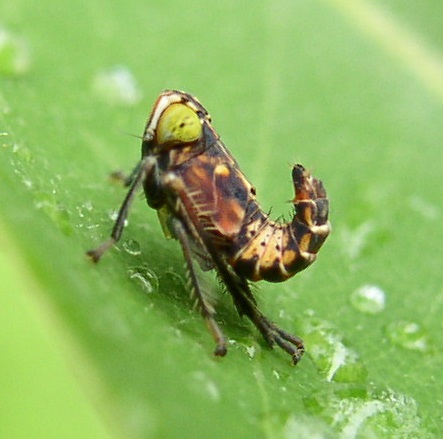|
Brixia (planthopper)
''Brixia'' is a genus of cixiid planthopper that includes about 120 species. Most species are found in the Oriental region, and a few in the Afrotropical realm The Afrotropical realm is one of the Earth's eight biogeographic realms. It includes Sub-Saharan Africa, the southern Arabian Peninsula, the island of Madagascar, and the islands of the western Indian Ocean. It was formerly known as the Ethiopi .... Species References External links FLOW database Auchenorrhyncha genera Cixiidae {{Fulgoromorpha-stub ... [...More Info...] [...Related Items...] OR: [Wikipedia] [Google] [Baidu] |
Carl Stål
Carl Stål (21 March 1833 – 13 June 1878) was a Swedish people, Swedish entomologist specialising in Hemiptera. He was born at Karlberg Castle, Stockholm on 21 March 1833 and died at Frösundavik near Stockholm on 13 June 1878. He was the son of architect, author and officer Carl Stål then Colonel, Swedish Corps of Engineers. He matriculated at Uppsala University in 1853, studying medicine and passing the medico-philosophical examination in 1857. He then turned to entomology and completed his Ph.D. at the University of Jena in 1859. The same year he became assistant to Carl Henrik Boheman in the Zoological department of the Swedish Museum of Natural History in Stockholm, where, in 1867, he was appointed keeper with the title of professor. He made collecting trips in Sweden and throughout Europe and visited other museums including the collection of Johan Christian Fabricius in Kiel. His study of the Fabrician types resulted in his "Hemiptera Fabriciana". A significant part of ... [...More Info...] [...Related Items...] OR: [Wikipedia] [Google] [Baidu] |
Indomalayan Realm
The Indomalayan realm is one of the eight biogeographic realms. It extends across most of South and Southeast Asia and into the southern parts of East Asia. Also called the Oriental realm by biogeographers, Indomalaya spreads all over the Indian subcontinent and Southeast Asia to lowland southern China, and through Indonesia as far as Sumatra, Java, Bali, and Borneo, east of which lies the Wallace line, the realm boundary named after Alfred Russel Wallace which separates Indomalaya from Australasia. Indomalaya also includes the Philippines, lowland Taiwan, and Japan's Ryukyu Islands. Most of Indomalaya was originally covered by forest, and includes tropical and subtropical moist broadleaf forests, with tropical and subtropical dry broadleaf forests predominant in much of India and parts of Southeast Asia. The tropical forests of Indomalaya are highly variable and diverse, with economically important trees, especially in the families Dipterocarpaceae and Fabaceae. Major ecol ... [...More Info...] [...Related Items...] OR: [Wikipedia] [Google] [Baidu] |
Afrotropical Realm
The Afrotropical realm is one of the Earth's eight biogeographic realms. It includes Sub-Saharan Africa, the southern Arabian Peninsula, the island of Madagascar, and the islands of the western Indian Ocean. It was formerly known as the Ethiopian Zone or Ethiopian Region. Major ecological regions Most of the Afrotropical realm, except for Africa's southern tip, has a tropics, tropical climate. A broad belt of deserts, including the Atlantic coastal desert, Atlantic and Sahara deserts of northern Africa and the Arabian Desert of the Arabian Peninsula, separates the Afrotropic from the Palearctic realm, which includes northern Africa and temperate Eurasia. Sahel and Sudan South of the Sahara, two belts of tropical and subtropical grasslands, savannas, and shrublands, tropical grassland and savanna run east and west across the continent, from the Atlantic Ocean to the Ethiopian Highlands. Immediately south of the Sahara lies the Sahel belt, a transitional zone of semi-arid sho ... [...More Info...] [...Related Items...] OR: [Wikipedia] [Google] [Baidu] |
Auchenorrhyncha Genera
The Auchenorrhyncha suborder of the Hemiptera contains most of the familiar members of what was called the "Homoptera" – groups such as cicadas, leafhoppers, treehoppers, planthoppers, and spittlebugs. The aphids and scale insects are the other well-known "Homoptera", and they are in the suborder Sternorrhyncha. Distributed worldwide, all members of this group are plant-feeders, and many are vectors of viral and fungal diseases of plants. It is also common for Auchenorrhyncha species to produce either audible sounds or substrate vibrations as a form of communication. Such calls range from vibrations inaudible to humans, to the calls of many species of cicadas that can be heard for hundreds of metres, at least. In season, they produce the most characteristic and ubiquitous noise of the bush. Etymology The word "Auchenorrhyncha" is derived from the Greek words αὐχήν (auchēn), meaning "neck" or "throat," and ῥύγχος (rhynchos), meaning "snout". Classification ... [...More Info...] [...Related Items...] OR: [Wikipedia] [Google] [Baidu] |
